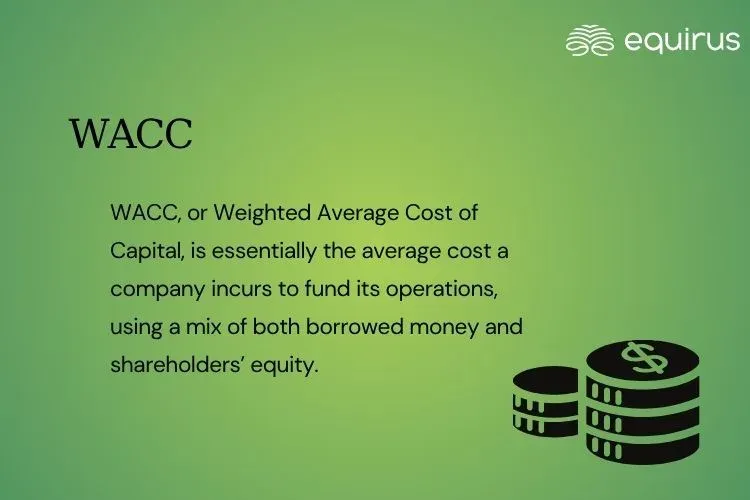WACC
WACC Full Form: Weighted Average Cost of Capital

Key Highlights
-
WACC, or Weighted Average Cost of Capital, is essentially the average cost a company incurs to fund its operations, using a mix of both borrowed money and shareholders’ equity.
-
WACC = (Portion of Equity × Cost of Equity) + (Portion of Debt × Cost of Debt × (1 - Tax Rate))
What is WACC?
WACC, or Weighted Average Cost of Capital, is essentially the average cost a company incurs to fund its operations, using a mix of both borrowed money and shareholders’ equity. It gives a clear picture of how much it truly costs to keep the business running and growing. WACC is a crucial metric for business valuation, investment appraisal, and corporate finance decision-making.
How is WACC Calculated?
WACC = (Portion of Equity × Cost of Equity) + (Portion of Debt × Cost of Debt × (1 - Tax Rate))
-
Portion of Equity/Debt: How much of the company’s total funding comes from equity (stock) versus debt (loans).
-
Cost of Equity: What shareholders expect to earn (often estimated with a formula like CAPM, which considers market risk).
-
Cost of Debt: The interest a company pays on its loans or bonds, but with a twist- since interest payments reduce taxable income, the actual cost ends up being a bit lower.
-
Tax Rate: Since interest is tax-deductible, this reduces the “real” cost of debt.
Why Does WACC Matter?
1. Valuing a Business: WACC helps figure out what a company is worth by discounting its future earnings to today’s dollars. A lower WACC can make a company look more valuable.
2. Making Investment Choices: If a project’s expected return beats the WACC, it’s likely a good move—it means the company earns more than it costs to fund the project.
3. Balancing Debt and Equity: Companies tweak their mix of debt and equity to keep WACC low, saving money while keeping investors and lenders happy.
